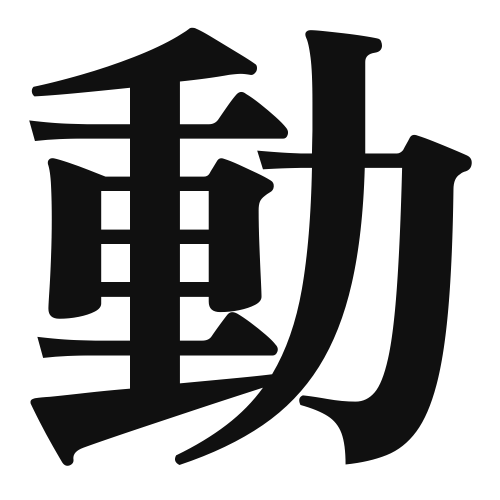1. Overview of Meaning
The kanji 動 (pronounced “dou”) means “to move” or “movement.” It conveys the idea of action, change, or motion in various contexts.
2. Formation and Radical
Formation of the Kanji: The kanji 動 is a compound character (会意文字) that combines the elements of “movement” and “motion.” It is derived from the pictorial representation of a person in motion.
Radical: The radical for 動 is 走 (pronounced “sou”), which means “to run.” This radical emphasizes the concept of movement.
3. Examples of Usage
Common Words and Phrases: Some frequently used words that include 動 are:
- 運動 (undou) – exercise or movement
- 動物 (doubutsu) – animal
- 動かす (ugokasu) – to move something
Example Sentences in Daily Conversation:
- 毎日運動をすることが大切です。
(It is important to exercise every day.) - 動物園に行きたいです。
(I want to go to the zoo.)
4. Synonyms and Antonyms
Similar Kanji: A similar kanji is 動き (ugoki), which means “movement” but focuses more on the act of moving rather than the concept of motion itself.
Antonym: The antonym of 動 is 静 (shizu), which means “still” or “quiet,” representing the absence of movement.
5. Cultural and Historical Background
Relation to Japanese Culture: The concept of movement is significant in Japanese culture, often associated with nature and the changing seasons. Movement is also a key theme in traditional arts such as dance and martial arts.
Proverbs and Idioms: One common proverb is 動かざる者食うべからず (ugokazaru mono kuu bekarazu), which translates to “Those who do not move cannot eat,” emphasizing the importance of taking action.
